Kusama’s Love Transformed Into Dots Infinity room
Toronto has gone downright dotty.
Even the stairways inside the AGO are decorated with dots.
As in ‘polka-dotty’ for the Yayoi Kusama exhibition on now at the Art Gallery of Ontario. Not since King Tut’s treasures drew over 400,000 visitors in 2009 have I seen such a frenzy to get tickets to an exhibition, made worse by the fact that there is a finite amount of Kusama tickets available.
As a member of the AGO I was lucky enough to get tickets, but for those of you who might not get to see the exhibit in person, here’s a peak into what makes Yayoi Kusama’s works so compelling. Once you learn how all these dots came to be, you might view them a little differently than just whimsical, Instagram-worthy subjects. (Spoiler Alert: the backstory is less fun than you’d think.)
Kusama: the Madness Behind the Method
Yayoi Kusama as a child
Yayoi Kusama is deeply troubled and has been since she was a child. An abusive mother and dysfunctional childhood probably contributed to her lifelong struggle with mental illness and most certainly resulted in her phobia surrounding sex and the male body (Kusama’s mother would send her to spy on her father’s extra-marital sex-capades, which clearly scarred her psychologically).
By the time she was 10, Kusama began having hallucinations, hearing pumpkins and flowers speaking to her, and seeing fabric patterns come alive and try to consume her. Working in a parachute factory at 13 during the war with air-raid sirens blaring overhead probably didn’t help Kusama’s mental stability either.
Kusama’s All the Eternal Love I Have for the Pumpkins Infinity Room
“It seems that pumpkins do not inspire much respect, but I was enchanted by their charming and winsome form.” Yayoi Kusama
Through all of her struggles, Kusama turned to art as both therapy and inspiration. She began to draw and paint her hallucinogenic visions, finding the act of reproducing the repetitive patterns of dots calming.
Yayoi Kusama soft sculptures and canvas works can be both menacing and appealing
She even tried to work through her sexual phobias by creating works that focused on phallic shapes and forms that she had the power to manipulate and control.
Kusama’s Phalli’s Field is filled with endless phallic sculptures
Creative expression became Kusama’s way of coping with her illness, despite the fact that her pursuit of art was neither accepted nor encouraged by her mother or her traditional Japanese culture.
Disobeying both, Kusama studied art in Matsumoto and Kyoto, but once again she found her creativity stifled by the post-war anti-Western sentiment of the 1950s that forced artists to only use traditional Japanese techniques and materials.
Kusama’s escape, both literal and figurative came in the 1960s when she moved to New York where she found a more accepting art scene and where her avant-garde pieces inspired artists like Andy Warhol and her rebellious anti-war performance art even influenced Yoko Ono. (Kusama was known to appear naked as part of her own installations, covered only in dots, and she often used other nude models in performance ‘happenings’ during which she painted them with dots as well.)
“All of us live in the unfathomable mystery and infinitude of the universe.”
It was in the 1960s that Kusama created her first Infinity Room (she’s up to 20 rooms to date) which allowed individuals to immerse themselves in a 360-degree environment she creates. A small door closes behind the visitor who is left inside a completely mirrored box that is filled with everything from pumpkins to polka-dot balls to lanterns. The mirrored reflections of these objects adds to the illusion of endless space and surrounds the visitor whose presence and reflections become part of the art as well.
Jane floating amongst The Souls of Millions of Light Years Away in one of Kusama’s most spectacular Infinity Rooms
It’s really a pity that with the time constraints at the AGO due to high demand, I couldn’t spend more time in these incredible spaces which are meant to be more of a meditative experience than Instagram fodder. Here are a couple of videos from two of the Infinity Rooms, which fortunately you can look at for as long as you’d like! (Note that the music is not part of the experience, but I used it to mask the other ambient sounds in the gallery.)
The Obliteration Room: Another Act of Rebellion
Interactive is the best way to describe the Obliteration Room, the last exhibit in the show where visitors are handed self-adhesive dots of various sizes and colours and encouraged to break the ‘don’t touch’ rules of traditional art galleries by placing their dots wherever they see fit in the room. By doing so they are once again creating art themselves.
Yayoi Kusama’s Dining Room in the interactive Obliteration Room
Kusama’s other dot-inspired works, and the repetition of the shapes and colours acts as a catharsis for the artist, and probably in this case, the visitor as well. (I found it particularly interesting to observe where and how people choose to place their dots – who seemed to follow other’s leads in building trails and designs, and who felt the need to jump high enough to stick their dots far above all the others on the walls.)
Obliteration Room place setting. Can you find it?
Kusama’s Creative Career Continues
Now 89, Yayoi Kusama has spent the last 38 years living voluntarily in a psychiatric institution in Japan after returning to her home country in 1973. Every day she still goes to paint in her studio that she built across the street from the hospital, creating canvases and sculptures from whatever comes into her mind, literally. And just to prove that there’s no end to her creativity, Kusama has recently added poetry and fiction to her artistic repertoire.
Yayoi Kusama in her 80s
Art as Symptom and Cure
The Yayoi Kusama exhibit is a visually beautiful experience worthy of the hype and the press, but the real story here is not Toronto’s obsession with seeing dots, but rather the artist’s ability to alleviate her mental illness through them. Her art may not be a cure, but it has helped Kusama cope with her altered reality, and there’s absolutely nothing ‘dotty’ about that.
Kusama’s paintings and sculptures at AGO
TIP: There are a small number of same-day tickets available for purchase at the AGO during the exhibition’s run. But you will need to be in line well before 10:00am when the gallery opens if you hope to score a pair.
Why such limited numbers? Tickets are limited to 120,000 largely due to the exhibition’s Infinity Rooms, which can only hold up to 4 people at a time. This means in order to keep people moving through the rooms, each group only has 20 or 30 seconds per room. And there are only so many hours in the day in which to process ticket-holders before the exhibition leaves Toronto.

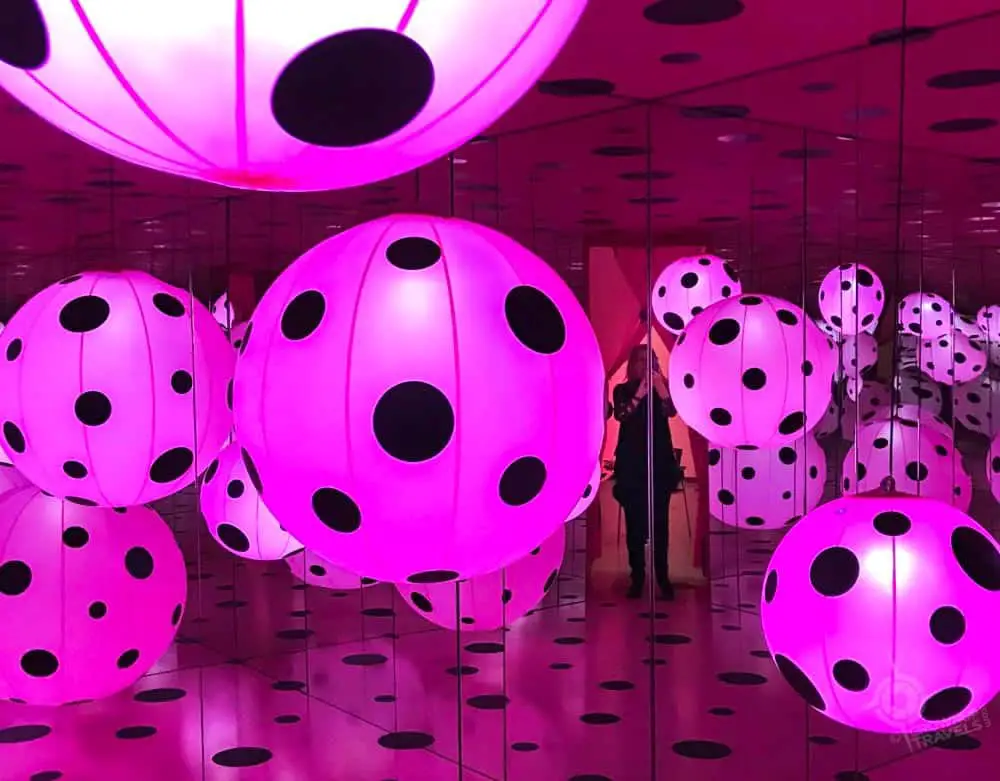
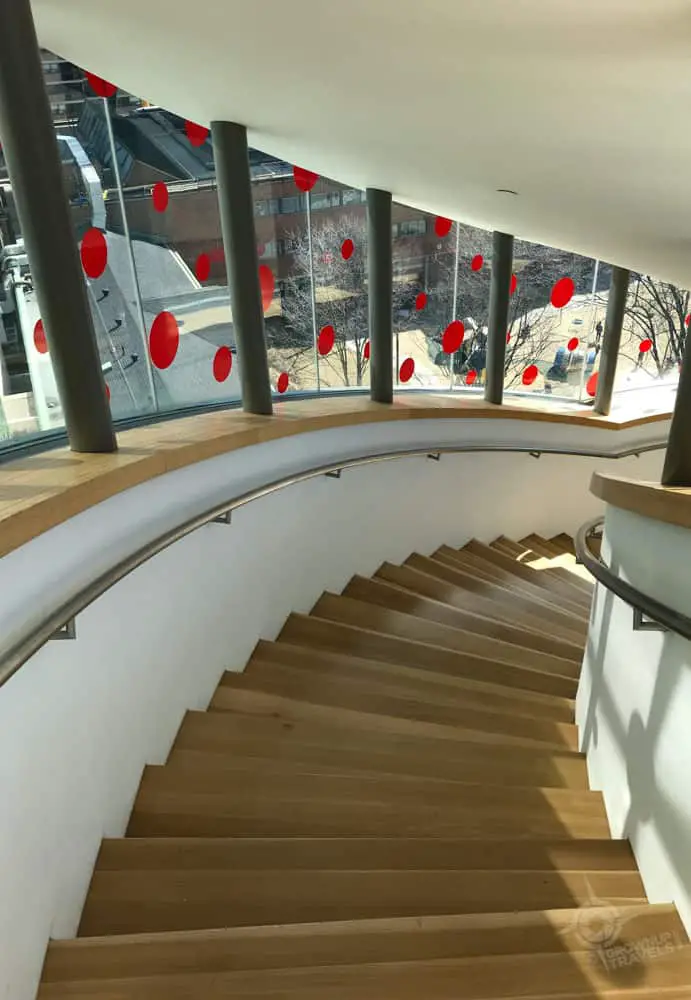
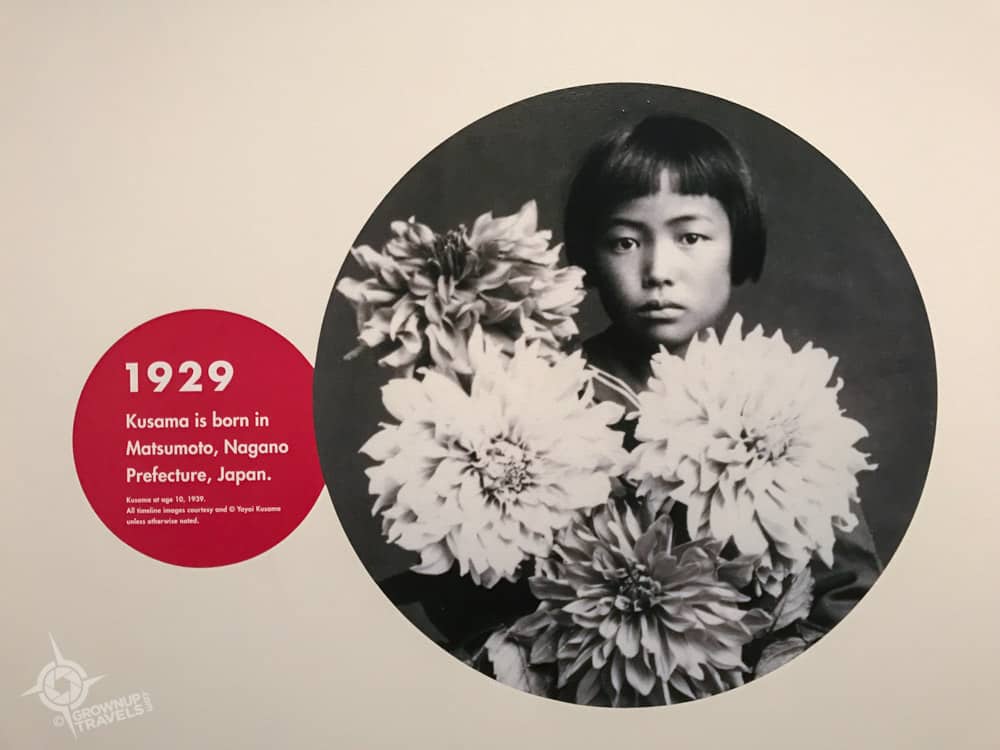
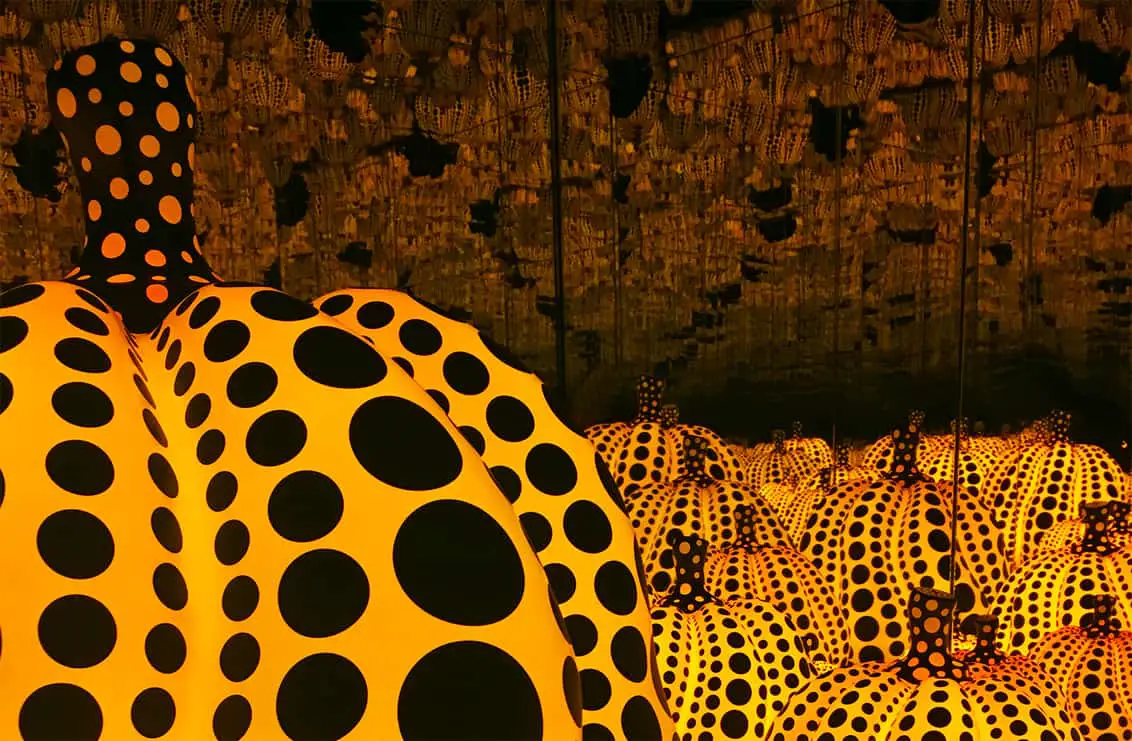
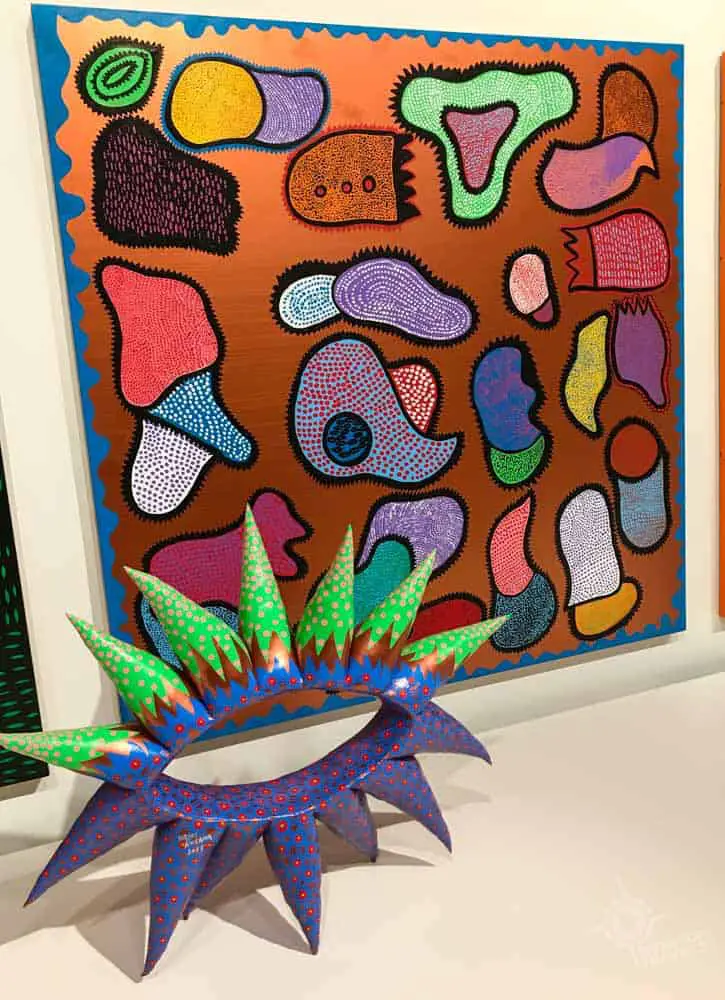

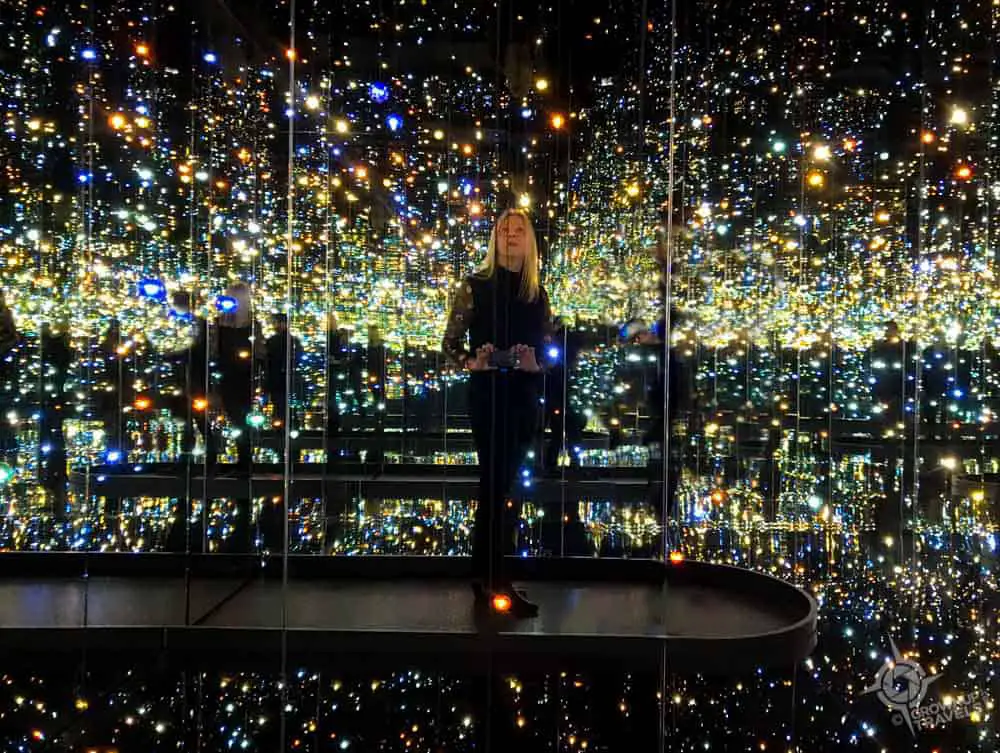

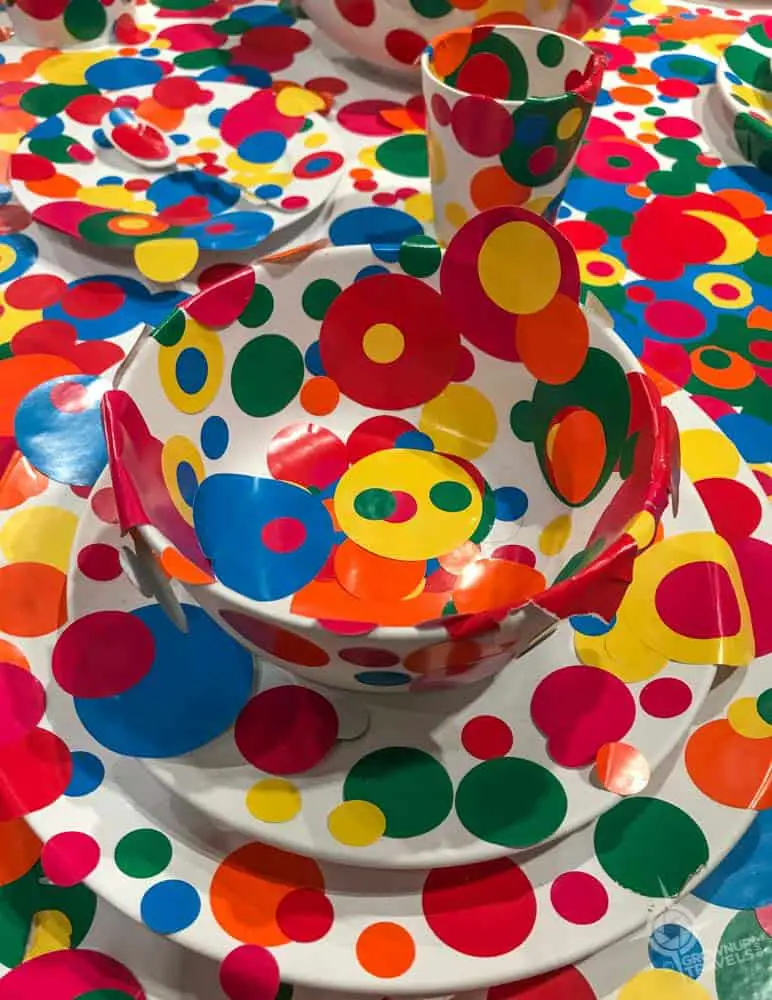
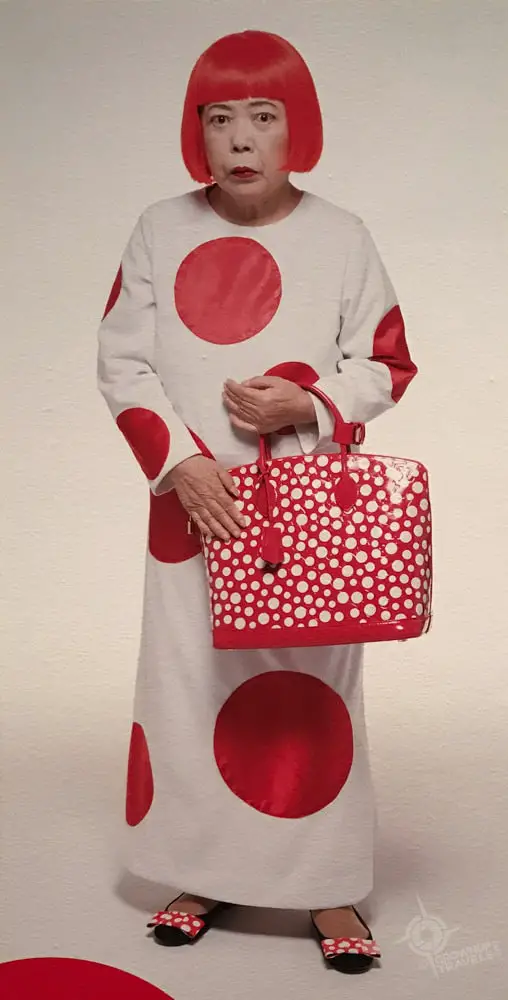
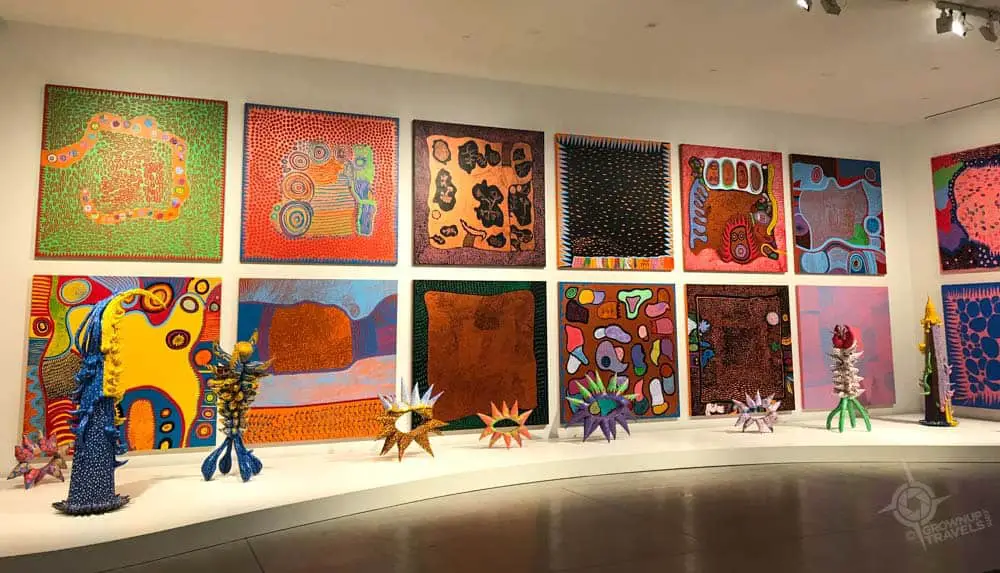
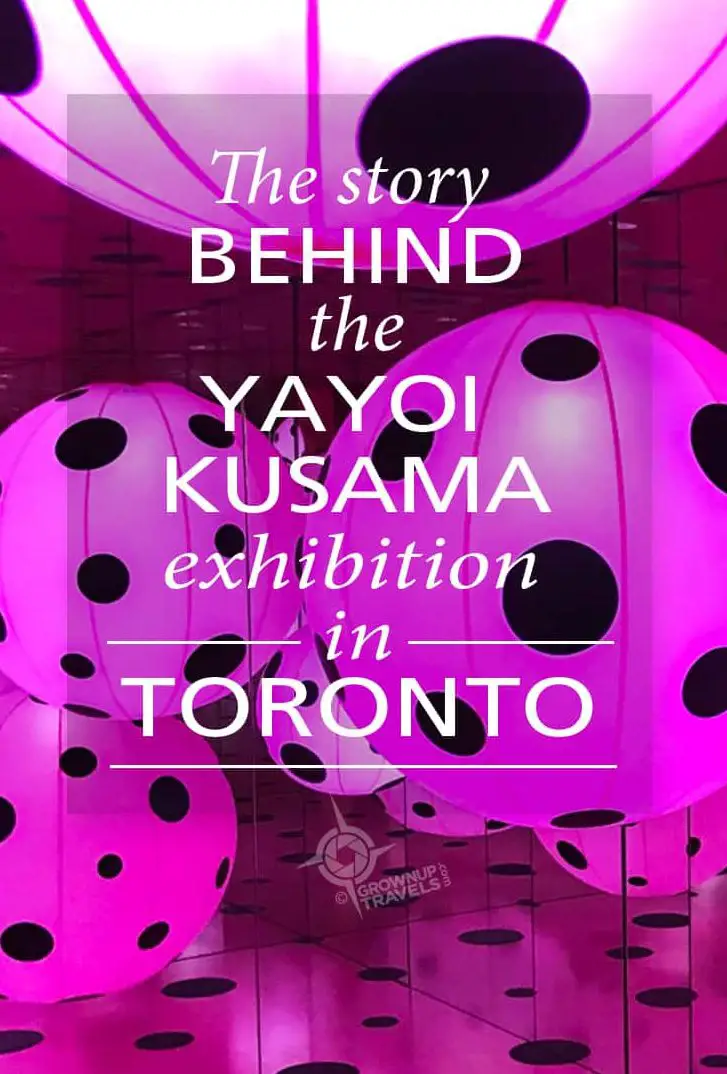

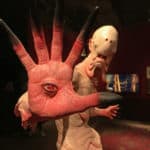
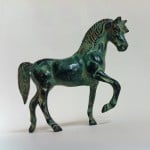
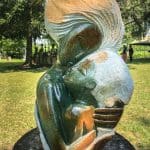







Hi Jane
I hope you’re well. What an interesting story. Thank you for sharing.
~ heidi
Thanks, Heidi! I’m glad you liked it (and sorry for the late response – I was away without internet for 9 days (arghh!) Hope your ventures are all keeping you busy and happy, too.
Fabulous post. Thanks for capturing the exhibit for us. The pumpkin image to me looks like billowing parachutes. hmm!
Thanks Kristin! Even though there had already been so much published on social sites and such, it was special to see the exhibition in person. (nothing like IRL to win the day!)
Wow! This exhibition sounds so worthwhile. I hope to get to Toronto before it ends.
It’s pretty impressive, Irene. I haven’t seen anything quite like it before myself.
I’m going next month, and am looking forward to this ground breaking exhibit even more after reading your brilliant encapsulation. Thank you.
I’m sure you’ll love it, Shila. Although I saw a lot of people just interested in the Infinity Rooms who didn’t seem to spend much time with Kusama’s other pieces. Be sure to check out the 2nd floor that has her Narcissus Garden, too, which is not part of the exhibit but accessible to all visitors.